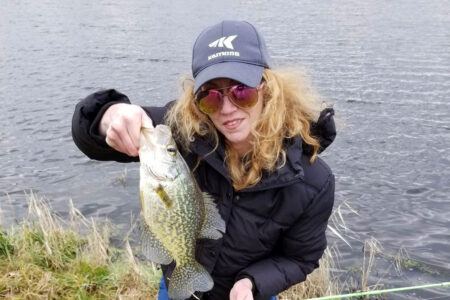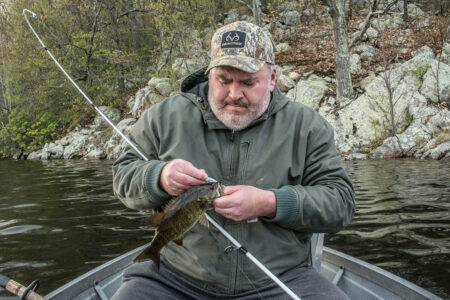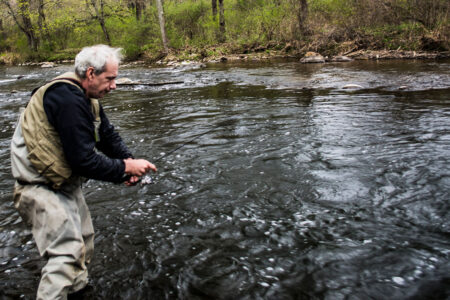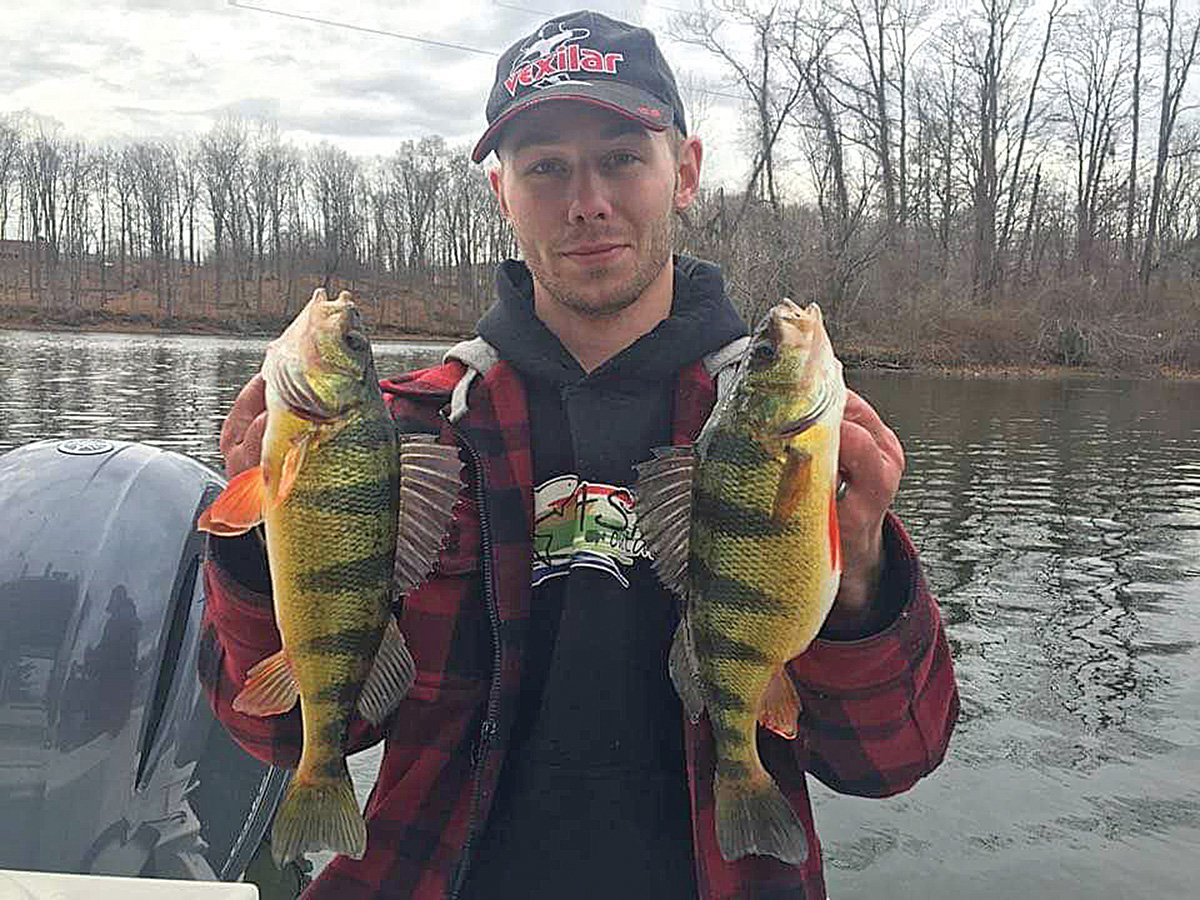
November fishing can start off great, but as we creep further into the month, the action often tapers off to a slow crawl.
Once water temperatures drop off, fish transition towards their winter homes. Their metabolisms slow down and they become less active. Just like every year, there will also be cold snaps when temps really dip down, and that affects fish greatly. So, it can be kind of tough out there this time of year, and before you know it you’ll be catching more leaves than fish once all of the trees are bare. Luckily there are a few options to check out for late-fall success.
Largemouth Bass
A lot of anglers stick with bass right to the very end. Fall bass fishing can be great, but only up until a certain point. Bass transition back to main-lake and secondary-lake points before heading for deeper water. Looking for structure like boulders and humps where they can hide to ambush prey is ideal. November is when you should be busting out the blade baits and small lipless cranks. Bass are definitely gorging themselves for winter, but they really won’t expend more energy than they consume. So vertical fishing is the name of the game, and you’ve got to stay on top of them. Fishing this way keeps your bait in the strike zone longer and keeps your rod bent. Just keep an eye on water temps because once you get down into the lower 40s it’s time to call it.
Perch
Panfish are great options for this time of year. They begin to stack up like cordwood as temps continue to drop. Vertical jigging is the right method, and similar baits that work for bass also work for panfish. The difference is the locations that you should be fishing. Perch really never go too deep (deep being a relative term here) and they love to hang on rocky and muddy bottoms, though in late fall large weed beds are perch magnets. I’ve had great luck fishing in the weeds in anywhere from 10 to 20 feet of water. Of course with winter draw-downs happening on some lakes, what was good yesterday might be a gnarly swamp tomorrow. That’s when going a little deeper and/or hitting the edge of the weeds is where you’ll have better luck.
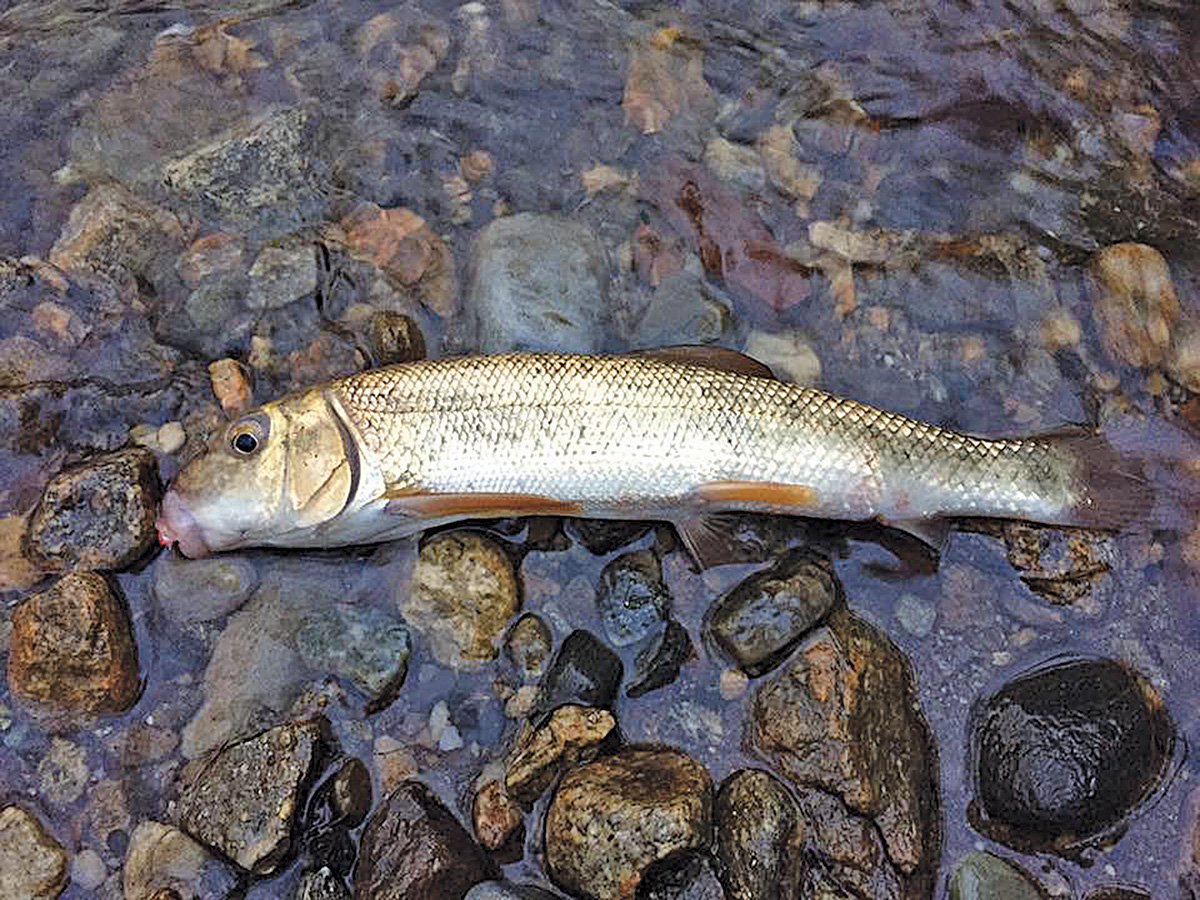
Ripping and pumping blade baits off the bottom works well. A lot of anglers love to bust out a jiggin’ rap too. I’ve taken tips from those Mid-West guys and have begun to tip spoons with shiners. Hit bottom and then reel up about a foot and wait. I’ve caught some of my biggest perch on that set up, and it definitely helps to keep the runts off the end of your line. Sometimes perch can be a bit finicky, especially after their school has been getting beat up for a bit. Stirring up the silt or mud by pounding the bottom can really turn them on because it causes quite the commotion. The theory is that perch think other perch are feeding and it starts a frenzy as they all try to grab a meal. Finding them late season can be like shooting fish in a barrel when you find a big school. If you are not finding fish then keep moving and don’t spend too much time in any one area. When you find them, you’ll know.
Crappie
Crappie are a bit different than perch to be honest. Perch generally hold to an area for a while and don’t roam too much. Well, at least not as much as crappie do. Crappie cruise in and out gorging themselves on baitfish. However, they do most of their feeding during low-light hours, so if you sleep in, you’ll probably miss out on some great action. During mid- to late-fall larger fish push in shallow once again. They are cover-oriented fish and the edge of weedlines are where you want to be, but don’t overlook any woody kind of structure. Docks, downed trees, submerged bushes and brush piles are great areas to poke around for fall slabs. Acceptable presentations are similar to what I mentioned works for perch, and again, vertical fishing yields the best results. This is because staying on top of a school and keeping your lure in their faces gets more bites, rather than trying to get fish to give chase.
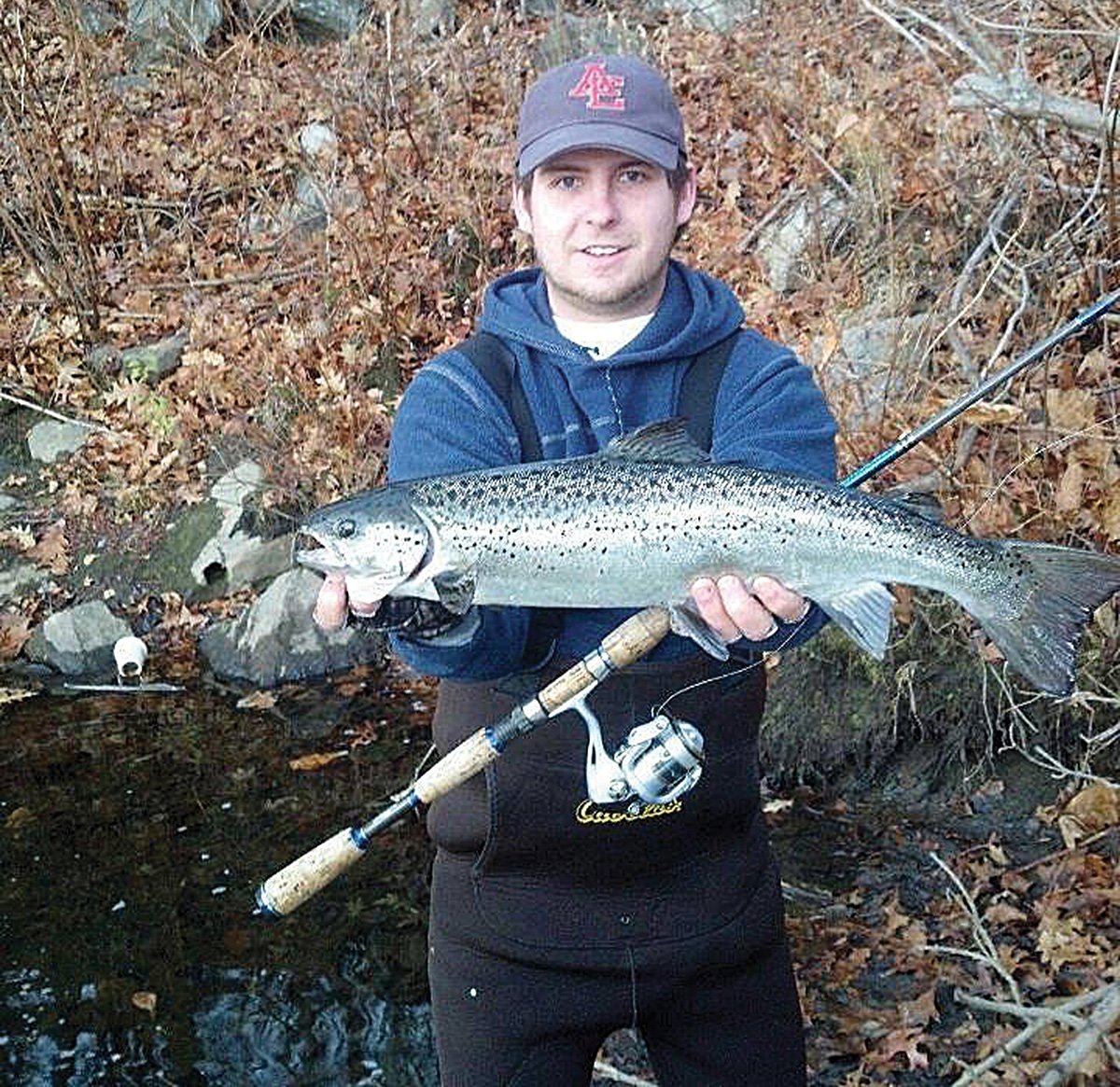
Trout and Salmon
Pay attention to the fall annual trout and/or salmon stockings. In my home waters of Connecticut, the DEEP stocks both trout and Atlantic salmon in select bodies of water, and all of the other states in New England have similar fall stocking programs. By obtaining this valuable information you can get in on the action. Knowing that fresh fish are stocked and hungry keeps you motivated on those freezing cold days. I know that I’ve definitely hit up a place to catch a few stockers after a long, cold and unsuccessful day elsewhere. Hey, they all can’t be banner days! In lakes and ponds stocked fish stick together for a while just cruising as they adapt to their new home. So when they roll by it can be a real slay-fest. In rivers you’ll have to work a little harder as they spread out more. I also like to collect any baitfish that I may encounter while chasing trout. I often and unintentionally catch dace, fallfish, common shiners and suckers in rivers and streams. So, I take a few with me in my bucket and save them for another day. Who doesn’t love free bait?
Pike and Pickerel
This brings me to my last suggestion, our slime dart friends. Pike and pickerel are extremely active throughout the fall. They are similar fish and in the same family, so their behaviors match. Both species thrive in cold water and they enjoy lurking in backwater coves and along thick weedlines. These fish are the reason that I collect large baitfish from rivers in the fall while targeting trout. Stocking up on them for ice fishing isn’t a bad idea either.
Although pike tend to grow larger and are more highly-valued than their smaller cousins, I like them both equally. During the colder months there are some days when pickerel keep the skunk away. Large inline spinners, spinner baits, hard baits like jointed Rapalas and jerk baits also work well this time of year. I’m a big fan of fire tiger color scheme baits when targeting these fish in the fall time.
Not so much species-specific, but here are a few more helpful tips that will hopefully add to your success when the going gets tough. Adding a little something extra to your bait can improve results. I’m referring to scents/attractants, of course. It helps no matter what, but it will definitely improve your shore fishing results because it makes a scent trail; fish have something to follow if they are missing the visual cues of your presentation. Using low-visibility line is also a good idea to remain stealthy as water clarity improves when water temps drop. You never know what you are missing if you don’t try it.
Lastly, as it gets colder and colder, fish will be more reluctant to bite. So give live bait a try. Sure fish will fall victim to artificials, but nothing out-fishes live bait. Bait pushes in shallower in the fall, and fish migrate as well depending on the availability of food. They are on the move to put on the feed bag leading up to winter, so it only makes sense that you’ll catch more with bait. Try tossing some shiners out there for your panfish and bass, and don’t forget about your larger bait for northerns. When we hit the dead end of fall, fishing with bait is the smartest thing you can do in order to find success!

